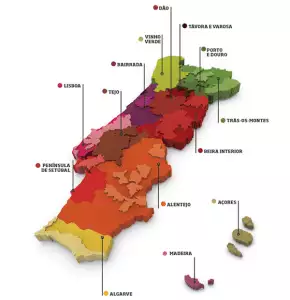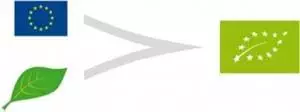State of the Union: Portugal’s Organic Wineries & Wines
In February 2012, the European Union (EU) took an important step in standardizing organic wine production among its member countries.
Portugal is not a stranger to organic wines with a sizable portion of its annual output having been “organic” for years, with each winery or quinta having had regional rules.
Now under new guidelines, it is possible to widely promote products of organic nature with full backing of a major economic zone. The new logo on certified products is a combination of the EU flag and a leaf.
Even though other regions and countries – such as the USA, Chile, Australia and South Africa – have had strict organic wine regulations in place for some time, for Europe this area in organic farming was the last one to receive official certification.
What Organic Certification Brings
What this means is that grapes are grown using only natural fertilizers, clover fields flourish that bind plant useable nitrogen to soil particles, herbal tea sprays used to combat insects and fungi, and natural insect predators are encouraged, such as ladybugs.
In addition to growing methods, organic requirements are carried into the production process with sulphite use drastically reduced to a maximum of 100 mg per litre in red wine (non-organic wines can have 150 mg/l), and 150 mg/l for white and rosé (compared to 200 mg/l for non-organic types). The maximum can only be used when residual sugar content is in excess of 2 grams per litre. Regardless of whether a Portuguese organic wine is from the Minho or Algarve region, or anywhere in between, it is made with the same exacting standards as say an organic Sancerre from France or a Liebfraumilch from Germany.
Portugal’s Wineries (Quintas)
Portugal has one of the largest total hectares of land for organic agricultural use in Europe, surpassed only by the other major wine-producing countries of Italy and Greece. As mentioned previously, the EU organic wine certification is recent whereas Portugal has been producing its brand for decades, if not centuries. Therefore, pre-2012 vintages, or quintas that have not yet been visited by a certification body to assess the new standards, are more likely to have the older label:
Depending on the country where Portuguese and other European organic wines are purchased, labels may have other substituted organic logos indicating observance of that country’s regulations. In the US for example, the National Organic Program (NOP) has to endorse whether products sold in that country meet national criteria. This endorsement is not provided directly through the NOP, but instead through subsidiary organizations in the country of origin.
The process for American certification is very cumbersome and time-consuming, but mandatory if a product is to be sold as “organic” in the American marketplace.
Such a convoluted process deprives American consumers of many fine organic wines, particularly from Portugal’s wineries, as smaller quintas versus monolithic wineries found in other countries often do not have the resources, or even money, to satisfy such a bureaucracy.
Ironically, it’s the smaller wine producers that have been practicing organic techniques the longest.





Love the explanation of organic wines in Europe! Thanks.